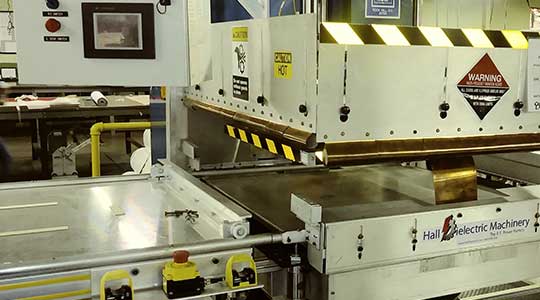What is RF Welding and How Does it Work?

Welding and heat sealing are often used interchangeably when people talk about the kind of industrial sewing we do at Vinyl Technology. Although the result of an RF weld often looks a lot like the same airtight and waterproof barrier you get from a traditional heat seal, the technology requires no heat at all. RF sealing, also known as dielectric stitching, uses high-energy radio frequencies to bond to plastic items together with an airtight, watertight seal.
A High Tech Solution
Though it’s been around since at least the 1970s, RF welding seems like science fiction. How is it possible to permanently fuse two materials together using the very same radio waves we use to communicate over long distances without wires?
Welding machines pass a high-energy electromagnetic field through the two plastic sheets that the sewer wants to bind together. The materials are designed to be “thermoplastic,” or to react in the expected way when subjected to the high frequencies required. Specifically, the radio frequencies excite the molecules in both substances to vibrate and, by virtue of being physically pressed together, bond with each other at the molecular level.
Why is it Called Heat Sealing if it’s Not Hot?
Don’t be fooled by the name, even though it is technically correct: the bond formed by the RF field is a kind of high-temperature seal, it’s accomplished without a hot surface or heating element. This seal is created not by applying heat but by using electromagnetism to do so. It’s similar to the difference between the convection oven you use for baking cookies and your microwave oven–two different technologies, two different uses, but the same result: a complete, nonpermeable seal.
What is RF Welding Used For?
Like most industrial sewing applications, RF sealing is broadly applicable to many scenarios unique to the use of heavy duty fabrics in manufacturing. When an impenetrable bond is needed in order to unite two flexible materials, other methods of joining them can be less than ideal. A stitch, for example, is, by itself, rarely waterproof. Glue or other kinds of adhesive might offer a more diverse array of uses, but the bond created can potentially be less durable than an RF seal.
For more information about how RF welding and other sealing technologies can help you meet your needs, get in touch with Vinyl Technologies today.
